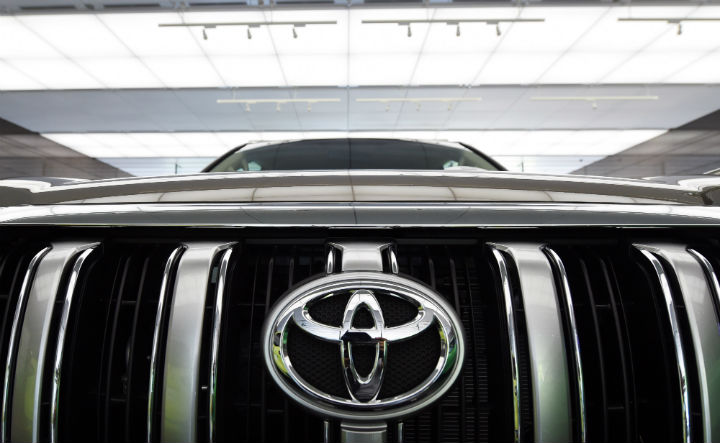Toyota says it has “procedures in place” to help make sure its vehicles don’t end up being used for “unauthorized military use,” but that apparently hasn’t stopped ISIS from building a fleet of Toyota SUVs and pick-up trucks.

“It is impossible for Toyota to completely control indirect or illegal channels through which our vehicles could be misappropriated,” Ed Lewis, the Japanese automaker’s Washington-based director of public policy and communications, told ABC News.
Lewis said, despite the company’s “strict policy not to sell vehicles to potential purchasers to modify them for paramilitary or terrorist activities,” there’s no way for Toyota to know whether bought or stolen vehicles are making their way into the terror group’s possession.
The company is supporting a U.S. Treasury Department inquiry into the terror group’s financing and “briefed Treasury on Toyota’s supply chain integrity” on Tuesday, Lewis said without giving details of what information it provided the department. The Treasury Department also wouldn’t comment, according to ABC.
READ MORE: Nuclear smugglers shopped radioactive material to ISIS, other terrorists
Former U.S. ambassador to the Nations Mark Wallace, who is now the CEO of a non-profit organization called the Counter Extremism Project, remarked the brand will need to make a greater effort moving forward, to determine how ISIS has acquired so many Toyota vehicles.
“I don’t think Toyota’s trying to intentionally profit from it, but they are on notice now and they should do more,” he told ABC. “They should be able to figure it out… how are these trucks getting there. I think they should disclose that, put a stop to that, and put policies and procedures in places that are real and effective to make sure that we don’t see videos of ISIS using Toyota trucks in the future.”
The brand’s Land Cruiser SUVs and Hilux pick-up trucks have become a fixture in ISIS propaganda videos, bearing its flag and carrying armed fighters around the territory it’s seized in Iraq and Syria in the past two years.
READ MORE: Russia fires cruise missiles, Syrian troops launch ground offensive in combined push
But ISIS is not the first extremist organization or rebel group to make Toyota its brand of choice.
An April 2014 report from Public Radio International (PRI) noted the Free Syrian Army, a U.S.-backed opposition group battling the regime of Syrian dictator Bashar al-Assad, is a fan of the Hilux as well and a shipment of non-lethal aid to the group that year “included 43 Toyota trucks.”
“Specific equipment like the Toyota Hiluxes are what we refer to as force enablers for the moderate opposition forces on the ground,” Oubai Shahbander, an advisor with the Syrian National Coalition and a former specialist in the Office of the Secretary of Defense, told PRI.
“You can absolutely expect for many of those trucks to be mounted with crew-served machine guns or other type of equipment, military equipment, that the opposition forces have access to. I mean, that’s one of the reasons why the Toyota Hilux is such an important force multiplier, because it could be used both for humanitarian purposes and for operational purposes as well.”
And the use of Toyota vehicles in battle zones goes back farther than that, as the New York Times reported in 2001.
Reporter John F. Burns wrote the Land Cruisers were “comfortable, air-conditioned and reliable, and they have large fuel tanks, all qualities much sought-after in this harsh environment.” The Hilux, he wrote, was perfect for carrying both people and weapons.




Comments